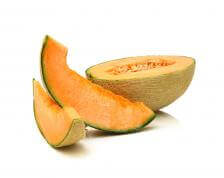Is Fruit a Hidden Source of Sodium?
Should you reduce the amount of melon you’re eating to avoid sodium? Get the full scoop from Nutrition Diva.
Monica Reinagel, MS, LD/N, CNS

by Monica Reinagel, M.S., L.D./N.
Q. I try to limit my sodium intake to about 2,500 mg a day. Recently, I looked up the nutrition information for cantaloupe and discovered it contains over 400mg of sodium in a 16 oz. serving! Should I reduce the amount of melon I’m eating to avoid the excess sodium?
- Answer I wonder if you might be using a diet tracking app, such as Lose it! or My Fitness Pal to look up nutrition info? These programs can be tremendously useful and most have huge databases of foods. Just keep in mind that most of this information is entered by other users, and often contains errors. The amount of sodium in 16 ounces of cantaloupe, for example, is only about 70 mg. You can double-check suspicious items (such as improbably salty melon) by checking a verified source, such as the USDA Food Composition Database.
Although I’m not concerned about the sodium in your cantaloupe, I should 
Related Content
Is Fruit Good for You?
Does Sugar in Fruit “Count” as Sugar?
Cantaloupe melon from Shutterstock

